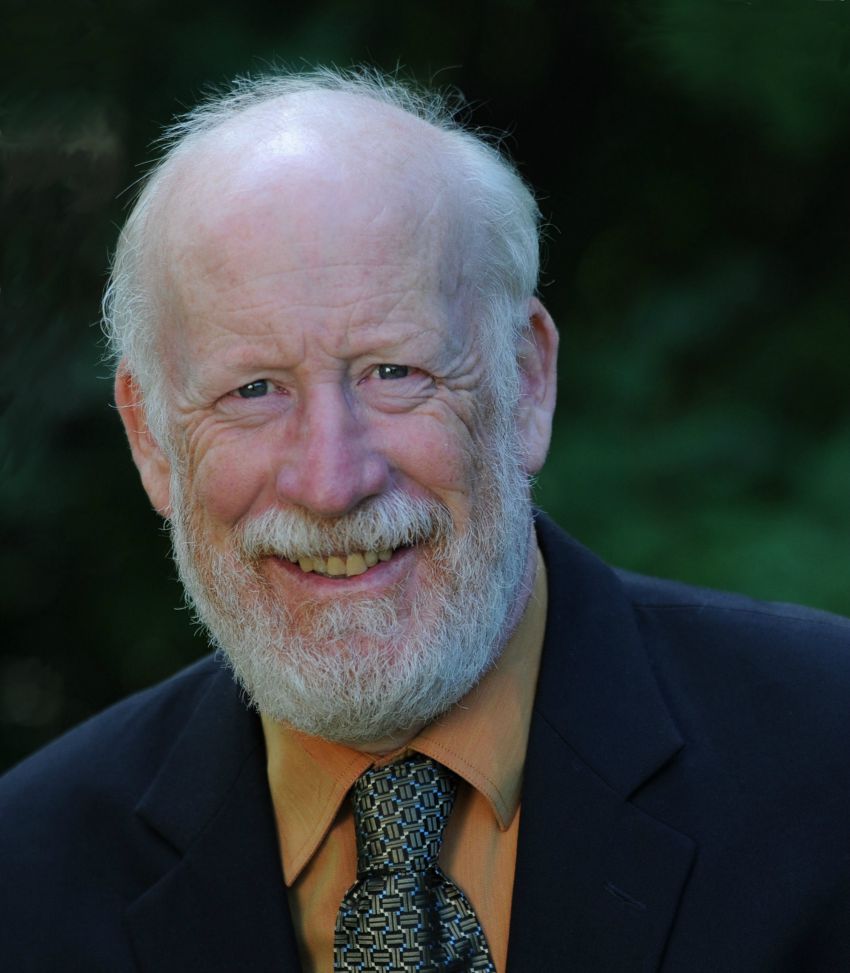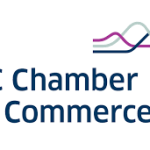Harvesting the First Fuel
Boston, Massachusetts is a city of firsts.
One of the oldest cities in the United States, Boston was founded by Puritan colonists in 1630. The first public school in the country opened in Boston in 1635 and the first American subway started up there in 1897.
The Innovation Cities™Program has ranked Boston as the number one innovation economy city every year since 2009.
Area colleges and universities make Boston an international centre of higher education and medicine. Once called the ‘Hub of the Universe’, Boston is regaining its reputation as an important political, cultural and economic headquarters.
Heck, Boston is the first city to win championships in all four major sports leagues in the new millennium. Its baseball team – the Red Sox – are currently in the World Series for the third time in the last ten years, after winning the title the last two times.
With such a reputation for excellence it shouldn’t be a surprise then that Boston has been declared the most energy efficient city in a report released last month by the American Council for an Energy-Efficient Economy (ACEEE) that ranked how each of the U.S.’s 34 largest cities measure up in terms of achieving energy efficiency.
Titled the “2013 City Energy Efficiency Scorecard,” the report ranked efforts to save energy and promote efficiency on a 100-point scale, with five categories: local government counted for 15 points, community initiatives for 10, buildings for 29, energy and water utilities for 18, and transportation for 28.
What is surprising is how energy efficiency is beginning to take centre stage from renewables and fossil fuels.
Efficiency comes out of hiding
After years of languishing in the shadows, energy efficiency has been acknowledged as the world’s “first fuel” by the International Energy Agency (IEA) with a global market already worth hundreds of billions, and with huge energy and carbon emissions saving potential.
“Energy efficiency has been called a ‘hidden fuel’, yet it is hiding in plain sight,” said the IEA’s executive director Maria van der Hoeven, at the October 17th presentation of the IEA’s first Energy Efficiency Market Report 2013 in Korea.
“Indeed, the degree of global investment in energy efficiency and the resulting energy savings are so massive that they beg the following question: Is energy efficiency not just a hidden fuel but rather the world’s first fuel?” she asked.
Between 2005 and 2010, 11 of the IEA member states made energy savings equal to $420 billion, higher than from any other single fuel source. Without this, the countries would now be consuming about two-thirds more energy than at present.
Since 1974, energy savings in the 11 countries avoided the burning of 1.5 billion tonnes of oil equivalent, according to the IEA’s report.
The report notes that, worldwide in 2011, energy efficiency schemes attracted about $300 billion in investment funds – which puts it on about the same level as global investments in fossil-fuel power generation or renewable energy.
Earlier this year, van der Hoeven asked in an IEA journal article:
“What simple tool offers the entire world an extended energy supply, increased energy security, lower carbon emissions, cleaner air and extra time to mitigate climate change? Energy efficiency. What’s more, higher efficiency can avoid infrastructure investment, cut energy bills, improve health, increase competitiveness and enhance consumer welfare – all while more than paying for itself.”
Boston set ambitious goals
Boston Mayor Thomas Menino began the quest to reap the benefits of energy efficiency with his 2007 executive order calling for a reduction in municipal greenhouse gas emissions of 7% below 1990 levels by 2012, 25% by 2020, and 80% by the year 2050.
The city also set a goal of reducing city-wide electricity demand by 200 megawatts (MW) through energy efficiency and alternative energy installations by 2017.
“We couldn’t be more proud of our progress in creating a greener, healthier city,” said Menino after the ACEEE accorded his city number one status. “Boston is a world-class city, and we know that our economic prosperity is tied to its ‘greenovation,’ which has helped create jobs and improve our bottom line. Reducing our energy use is just one smart step in improving the quality of life in Boston and around the world.”
In fact, the city’s 2011 climate action plan update explains just how lucrative the economic gains to Boston will be:
After accounting for initial costs, residents, businesses, and institutions will have total net savings of $2 billion in energy costs by 2020. In addition, Boston will benefit from improved public health and reduced health care costs from reductions in air pollution, less traffic congestion, and a safer, cleaner environment.
Boston has a broad set of efficiency policies, exemplified most recently by the adoption of an energy-use-disclosure requirement for buildings, and also runs its own efficiency program, Renew Boston.
Community-wide energy efficiency targets allow for the coordination of several programs under a unifying policy. Targets not only provide a basis for the development of long-term sustainability programs, but they also can help mobilize funding for efficiency programs.
Building retrofits help meet GHG reduction goal
The Climate Action Plan goal is to reduce GHG emissions from buildings by 24 percent by 2020. Energy efficiency retrofits of existing buildings will account for two-thirds of the reductions needed to meet the 2020 building GHG goal.
Among the initiatives begun under Renew Boston:
- Launching residential ($1.8 million) and small business ($1 million) programs that combine existing utility rebates with other funds to assist qualified Boston homeowners, landlords, and businesses in making energy improvements to their properties. Eligible Bostonians receive low-hassle, no-cost home energy assessments and free efficiency upgrades including insulation, air sealing, water saving devices, and high-efficiency light bulbs
- Contracting with 13 community-based organizations to conduct local outreach, and contracting with three full-time community coordinators to oversee the outreach city-wide.
- Launching a $900,000 retrofit program specifically directed at low-income, multi-family buildings.
- Marketing energy efficiency to homeowners interested in residential solar energy and coordinate utility energy efficiency incentives with third-party financing for over 100 solar energy systems on retrofitted homes.
Website calculates solar potential
Mayor Menino, who had solar panels installed on his home last year, has set a goal of 150 new residential-scale solar power installations in Boston, representing a 50 percent increase from last year’s campaign.
The Renew Boston Solar website provides a basic overview of solar energy use in Boston with a goal of generating interest in solar power among property owners. The Solar Boston map allows owners to see active renewable energy installations within the city, and to select and calculate the solar potential of a particular building rooftop.
A website tool calculates the usable roof area, potential solar system size, the incoming solar radiation, potential annual cost savings, and potential annual CO2 savings.
In August, Mayor Menino celebrated the completion of the city’s first Energy Positive (E+) home. The E+ Green Building program requires buildings that generate more energy than they use annually as indicated by a Home Energy Rating System (HERS) Index of less than zero.
The four units, with super insulation, triple-pane windows, and solar panels, will on average produce twice as much energy as they consume. The Boston Redevelopment Authority, Department of Neighborhood Development and Environment and Energy Services already has started on the next E+ development.
Taking green building to the next frontier
“We are taking our green building and renewable energy efforts to the next frontier by creating ultra-efficient housing that generates surplus clean energy,” says Menino. “We will demonstrate that energy positive green housing can be constructed sustainably and cost-effectively, while enhancing the livability and vitality of Boston’s neighborhoods now and into the future.”
Beyond the economic benefits of energy efficiency, Boston recognizes behaviour change is important to achieve climate goals and the city encourages people and businesses to take opportunities to learn something new, exercise responsibility and be part of a community effort. Greenovate Boston provides resources and tips on energy, transportation, waste and water to help residents and businesses make the city a better and healthier place.
Lights Out Boston is such an example that encourages businesses to reduce outdoor lighting. Participating building owners and managers agree to turn off or dim all architectural and internal lighting between 11 p.m. and 5 a.m.
Low income weatherization support
Action for Boston Community Development (ABCD) is a unique organization that has provided basic services and innovative programs to help empower individuals, families, and communities to overcome poverty for 50 years. ABCD’s Weatherization Assistance Program (WAP) helps make low-income households more energy efficient at no cost to clients.
Those with oil or electric heat may receive improvements, at no cost, totaling $4,500 or more. Through another sponsored weatherization program, those with gas heat may receive conservation measures totaling $4,500.
Even apartment and condo dwellers in Boston receive assistance. For example, all Boston residents living in 1- to 4-unit dwellings can find out where their home is losing energy, at no-cost. This energy assessment will include lightbulb replacements, a programmable thermostat, and water-saving devices, like shower heads and faucet aerators – all at no cost. Those living in buildings with more than four units can receive discounted prices at MassSave – for example, high-efficiency lightbulbs can be ordered starting at $1.00 a piece.
Residents of a multi-family facility with five or more units owned by a Public Housing Authority, non-profit, or a for-profit entity in which 50% of the households have income at or below 60% of the median income are also eligible for energy saving grants.
Although Boston has done the most to reduce its energy footprint, earning a score of 76.75 out of 100 on the report card, other cities also achieved high scores – among them Portland, Ore., New York, San Francisco, Seattle and Austin.
While Boston scored the highest, it didn’t come out on top in all categories. For instance, San Francisco tied Boston for the first spot in utility public benefits programs. Portland received the most points for its transportation and local government operations, while Seattle ranked first for its building policies and Austin is the city furthest ahead of its state on energy efficiency policy.
All cities have plenty of room for improvement. Boston left a quarter of the possible points on the table and only 11 cities scored more than half the possible points.
There is a huge lack of awareness around energy efficiency and much more must be done to educate the public about the important benefits energy efficiency brings in both financial and environmental terms.
Efficiency generates local economic and community development
The ACEEE says energy efficiency “may be the cheapest, most abundant, and most underutilized resource for local economic and community development.” It goes on to add:
“Considerable evidence documents that investments in energy efficiency can improve community self-reliance and resilience; save money for households, businesses, anchor institutions, and local governments; create local jobs; extend the life of and reduce the costs and risks of critical infrastructure investments; catalyze local economic reinvestment; improve the livability and the local asset value of the built environment; and protect human health and the natural environment through reducing emissions of criteria pollutants and greenhouse gases.”
These are benefits far greater than can be garnered by continued development of hydrocarbon fuels, either through tar sands extraction or natural gas fracking. And it is much safer and better for the environment.
What is your town or city doing to glean the benefits of energy efficiency? More cities – big or small – should be learning from the innovative efforts of Boston which is leading the way in helping its residents harvest the advantages of this ‘fuel’.
Michael Jessen is a Nelson-based energy efficiency specialist and owner of the consultancy Zero Waste Solutions. He can be reached by email at zerowaste@shaw.caor by telephone at 250.229.5632.
RESOURCES – The Innovation Cities Global Index 2012-2013 can be found at http://www.innovation-cities.com/innovation-cities-global-index-2012/7237
The ACEEE 2013 City Energy Efficiency Scorecard report can be accessed at http://www.aceee.org/sites/default/files/publications/researchreports/e13g.pdf
The Executive Summary of the IEA’s first Energy Efficiency Market Report can be found at http://www.iea.org/Textbase/npsum/EEMR2013SUM.pdf
The Spring 2013 edition of the Journal of the International Energy Agency dedicated to the Visualizing the “Hidden” Fuel of Energy Efficiency can be read at http://www.iea.org/media/ieajournal/Issue4_WEB.pdf
Boston’s 2011 climate action plan update entitled A Climate of Progress can be downloaded at http://www.cityofboston.gov/images_documents/A%20Climate%20of%20Progress%20-%20CAP%20Update%202011_tcm3-25020.pdf
Renew Boston Solar is at http://gis.cityofboston.gov/solarboston/#
Renew Boston Solarize is at http://renewboston.org/solar/
Find out more about E+ housing program at http://www.epositiveboston.org/
Greenovate Boston is at http://greenovateboston.org/
ABCD’s website offering fuel assistance and other energy programs to low income residents can be accessed at http://www.bostonabcd.org/energy-and-fuel-services.aspx
A program description for low income multi-family energy retrofits is at http://leanmultifamily.org/program


























Comments